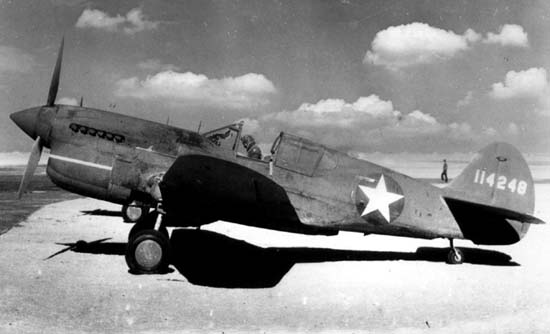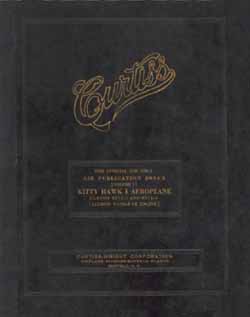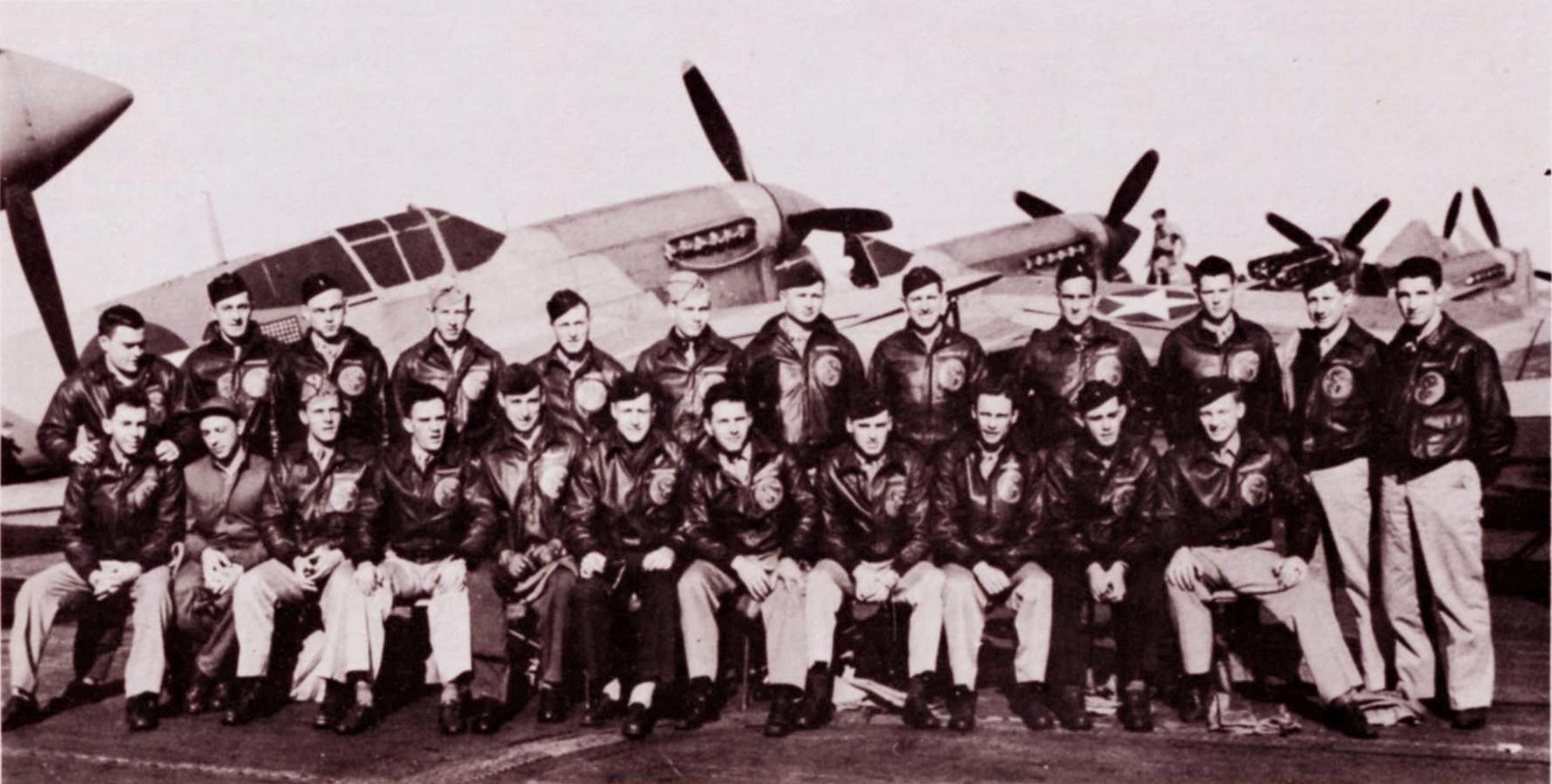_
|
HISTORY |
|
|
|
THE BEGINNING |
|
|
 |
|
x |
|
The Curtiss P-40E was the
first aircraft assigned to the newly formed 318th Fighter Squadron
|
|
|
|
The story of the 318th "Green
Dragons" began on 3 August 1942, activating at
Bedford,
MA gaining personnel transferred
from the 85th Fighter Squadron, 79th Fighter Group. The 318th Fighter
Squadron (Single Engine), and its sister squadrons, the 317th and 319th,
would be aligned under the (soon to be) famed "Checkertail Clan" the
325th Fighter Group (325th FG). In October of 1942, under the command of
First Lieutenant George B. Gingras, the 318th moved to
Grenier Field, NH
to begin the formal organization of the squadron gathering personnel
from various Army Air Force (AAF) training schools and other fighter
squadrons. As they arrived, the men began a period of training designed
teach the new "Dragons" techniques they would need to fly, fight, and
maintain their newly assigned aircraft, the Curtiss P-40E Warhawk.
|
|
|
|
After completing months of
training, the members of the 318th were more than ready to join the
fight. On 1 January 1943, the Boston Air Defense Wing,
1st Air Force, issued orders for the 325th Group to transfer (permanent
change of station or PCS) to Langley Field, VA for overseas deployment.
The Squadron would travel to their overseas assignment in two separate
groups called echelons, a flight echelon (mainly pilots) a air echelon
(crew chiefs and armorers) and a
ground echelon (mainly assigned to the Group, supply, clerical, cooks
etc).
|
|
|
|
The pilots of the 318th
interpreted their travel orders somewhat differently that the other
squadrons. All travel for the Group was to be by rail, in full uniform,
318th pilots "mistook" the orders, and dressed in more comfortable
flight gear, which surprised visitors at the South
Boston Rain Station. During the wait, the squadron became
the center of attention during an impromptu farewell ceremony thrown in
their behalf. As they boarded the train, the men of the 318th were sent
away with cheers, and kisses from the crowd, a traditional sendoff for
men headed off to war. Being the first to board the train, the Green
Dragons were treated to the more comfortable "first class" parlor car,
the later arriving squadrons found themselves in the coach & baggage
cars - score one for the Green Dragons!
|
|
|
|
After an overnight train
ride, 1Lt. Gingras and the twenty-three pilots of the 318th arrived at Norfolk Naval Operating
Base on the morning of 3 January. Among the officers, was a group of
Enlisted or Sergeant Pilots who, by an Army Air Force directive, were
promoted to "Flight Officer" status. This promotion, which saw most of
the AAF's Sergeant Pilots elevated to the rank of
flight officer (with officer privileges) or to second lieutenant before
their assignment to a combat unit, was accomplished in an attempt
to improve their treatment if captured by the enemy.
|
|
|
 |
 |
|
|
|
As they arrived, the 318th
pilots checked-out in factory their fresh P-40Fs, and later, informed
that they would soon on their way to combat aboard an aircraft carrier.
Working with the U.S.
Navy, the squadron devised a special program designed to allow the Army
pilots of the 318th to make simulated takeoffs from an aircraft carrier
by painting the outline of the ship on the
Langley
airfield.
|
|
|
|
On 6 January 1943, a "flight
echelon" consisting of 7 officers, 1 flight officer and 61 enlisted men,
followed 1Lt. Gingras and the pilots to the Norfolk
to board the aircraft carrier USS Ranger, two days later the ship was
underway heading directly to the French
Morocco. After the Ranger arrived to
the launch point miles off the Northern coast of Africa, all of the
aircraft were readied for takeoff, and were able to launch without
incident just as they practiced at Langley. All aircraft and personnel
re-organized at Casablanca's
Anfa
Airport
on January 19.
|
|
|
|
On 22 January 1943, the
remainder of the squadron, an "air echelon" consisting of 6 officers and
188 enlisted men, moved to Camp Kilmer, NJ awaiting orders to enter
combat. On the evening of 7 February 1943, the group boarded the Navy
transport ship USS Lyon, at Staten Island,
NY
on their way to
Algeria. After two weeks at sea, the
group landed at Oran,
Algeria, proceeding to
Sainte-Barbe du Tlélat Airfield
where they remained for a
week before moving to Tafaraoui Airbase in
Algeria. After many problems expected
with a mass movement of an AAF's unit were conquered, the entire
squadron assembled at Tafaraoui on 28 February 1943.
|
|
|
|
|
 |
|
x |
|
During their cruise to
Casablanca aboard the USS Ranger, pilots
of the 318th Fighter Squadron form up for this photo in front of their
P-40F's.
|
|
|
During February, the 325th FG
received orders by higher command to transfer a number of its P-40s to
the 33rd Fighter Group, a combat seasoned group who, at the time, was
supporting US forces in western Tunisia. With its inventory of aircraft
reduced by the transfer, the 318th, alongside the 317th & 319th Fighter
Squadrons, trained for combat in North Africa.
|
|
|
|
On 11 February, the 318th FS
suffered the Groups first operational loss after a mid air collision
between the 318th commander, Lt. Gingras, and the Squadrons Operations
Officer Lt Joe Bloomer during a formation loop drill. Lt. Bloomer was
able to parachute to safety, unfortunately Lt. Gingras was not as lucky,
with his aircraft crashing into the ground after a 6,000-foot fall. In a
formal ceremony, Lt. George Gingras was buried in an Allied cemetery in Casablanca with five 318th
P-40's flying in a missing man formation overhead.
|
|
|
|
On 13 February, the 33rd FG
returned from combat with some, but not all of the P-40s, some being
lost in fierce combat with German Luftwaffe. During the last weeks of
February, the 318th was transferred to
Oran only to return to Tafaraoui days later.
While there, pilots and ground personnel spent the month of March
preparing their P-40s for combat by training with combat seasoned
aircrews. On 5 April, the squadron (and the 317th FS) received orders to
move to Montesquieu Air Base,
Algeria, the 500-mile journey, mostly
accomplished by Douglas C-47 Skytrains, was a first movement by air of
an AAF squadron conducted in a war zone. Two days later, twenty seven
C-47's were loaded with the personnel and equipment of the 318th & 319th
Squadrons and 325th Fighter Group HQ, bound for Montesquieu AB.
|
|
|
|
Pilots transferred the
Squadrons P-40's to their new base of operations in flights with only
one 318th P-40 flown by Lt. William M. Lott, damaged during a landing
attempt crashing into a house nearby the airfield at Montesquieu. By 15
April 1943, the 325th Fighter Group (318th FS & 319th FS) along with the
320th Bomb Group were based at the field
mountains near M'Daourouch, about 112 km southeast of Constantine,
consisting of East – West and North-South runways surrounded by hills at
an elevation of 3800 feet.
|
|
|
|
Next page: The P-40 Era (1942 - 1943)
|
|
|
|
|
 |
|